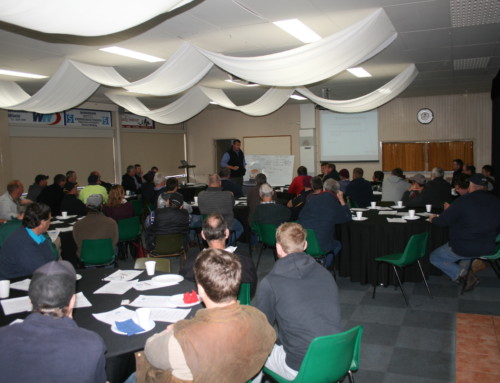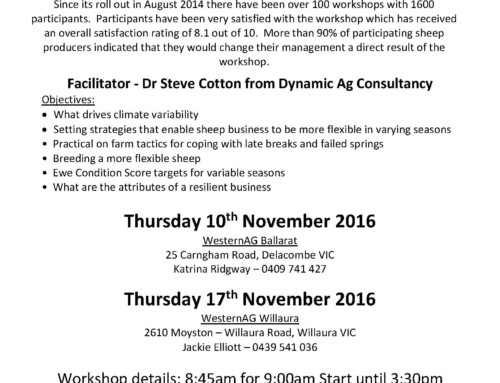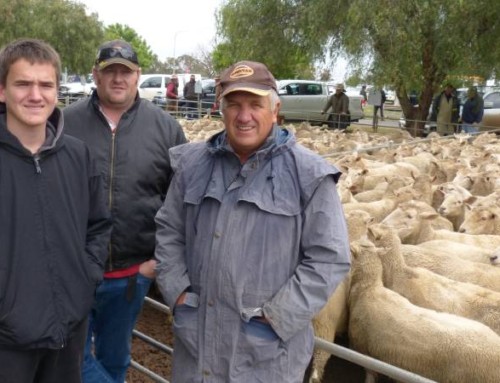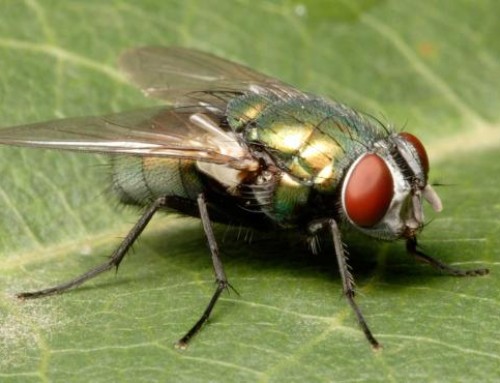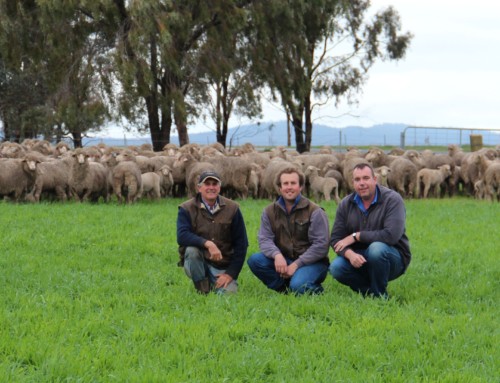Hypocalcaemia in sheep
Following the long dry summer and extensive grain feeding of sheep, we are seeing numerous cases of hypocalcaemia (milk fever) in Autumn lambing ewes. Hypocalcaemia (a metabolic disorder) in sheep occurs when there is insufficient intake and absorption of calcium and insufficient resorption from skeletal reserves to meet foetal demands. The condition develops with the approach of lambing and is characterised by ewes that appear staggery and unable to stand and death can follow if left untreated. Hypocalcaemia in sheep resembles pregnancy toxaemia (twin lamb disease caused by energy deficit) being more likely to occur in twin bearing ewes that are losing condition, are stressed by transportation or movement (i.e running ewes in pre-lambing for crutching or vaccinating/drenching) or have been exposed to a sudden change in or shortage of feed. In one recent example, a farmer in north west Victoria moved ewes (2 weeks from lambing) from a lucerne paddock (high in calcium) to a Veldt grass paddock (low in calcium) and within 1 day of moving them, suffered 45 cases of hypocalcaemia, including 18 dead. It is possible that pregnancy toxaemia can develop in conjunction with hypocalcaemia because loss of appetite is common with this disease, thus reducing energy intake.
At this time of year, the risk of hypocalcaemia in sheep is heightened for a number of reasons:
- Less sunny days available and therefore less UV irradiation available to manufacture vitamin D3 which affects the animals ability to absorb and use calcium
- Livestock have been fed high grain and cereal hay/straw diets for the past 3 months, both very low in calcium
- Some producers may not have been supplementing livestock with calcium or have been supplementing stock via lose licks. Research has suggested that variable uptake rates occur and in some studies have shown up to 20% of stock do not access lose licks. Where possible and where practical, applying agricultural limestone directly to the grain at around 2% w/w (20kg/tonne grain) each feeding day will ensure that all animals receive some supplement
- Calcium requirements in the last 2 weeks of pregnancy are very high and hormonal and physiological changes reduce the ability of the small intestine to absorb calcium
- Pastures growing rapidly may contain lower levels of Calcium and the recommended lower level is ~2g Ca/kg DM (Nutrient Requirements of Domesticated Ruminants 2007). Most of calcium of pasture plants is located in the cell wall and therefore its concentration is higher in mature plants during late spring and summer compared to vegetative plants in autumn and winter.
To lower the risk of ewes coming down with hypocalcaemia, avoid mustering or transporting ewes that are within weeks of lambing and ensure ewes are well fed if they are to be yarded. Endeavor to put ewes back on pasture within 12hrs of yarding or transporting. Ensure they have adequate fibre in their paddock (such as hay or straw) as cud chewing aids in calcium absorption. If feeding cereal grain or hay based diets, ensure the grain is treated with ground agricultural limestone. The general recommendation is 15kg/tonne of grain. Salt (NaCl) will improve the palatability of the limestone. Limit paddock rotations, particularly across different forage types and transition animals onto green pick gradually if they have been fed full supplementary rations for the past month or two. Monitor livestock daily and treat ewes that are down with an injection of calcium. Products containing calcium borogluconate work the best and include “Calcigol Plus”and “Milk fever 4 in 1” injection which are readily available from your rural supplies outlet. Warm the injection prior to administration and usually 60-100mL is sufficient. Inject either intravenously or subcutaneously. Follow the manufacturers recommendations. Rattle the treated animal as a subsequent injection may be required and this makes these animals easier to spot in the paddock. Re-treatment can usually occur within 4-6hrs of the first injection. If in doubt consult your veterinarian or animal health consultant.




